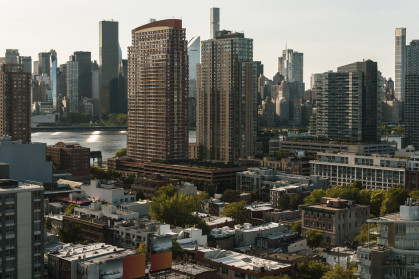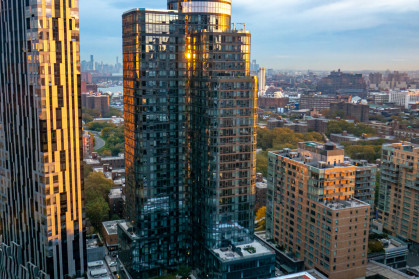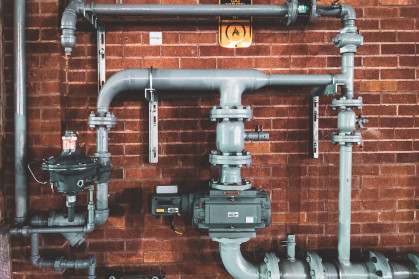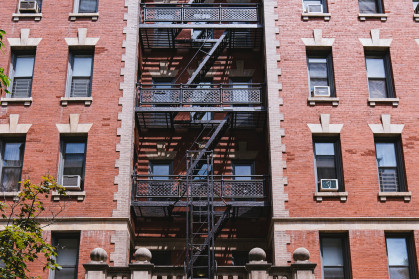
What are the expenses involved in running a NYC co-op or condo building?
While the cost to maintain each building varies, the costs that every building incurs include heating, electric, water, insurance, and real estate taxes. Building size also impacts costs in various ways.
Some typical expenses of NYC co-op and condo buildings
Real estate taxes
These are levied on real property (i.e. land and buildings) by the government. In a co-op building in New York City, the corporation that owns the deed or land lease pays the real estate taxes which are passed on to owners as part of the maintenance fees. This is because the co-op corporation, not the individual owners, holds the title to the property.
In a condo building, the individual owners are responsible for paying the real estate taxes directly, as they hold the title to their own individual units. Real estate taxes, or property taxes, are typically a major expense for both co-op and condo owners.
Staff
These are the expenses associated with hiring and paying staff members, such as doormen, porters, and maintenance workers.
The cost of hiring and paying a full-time doorman can be a significant expense. Doormen are responsible for a variety of tasks, including greeting residents and visitors, checking IDs and packages, handling deliveries, and providing security for the building. They may also be responsible for other duties, such as calling taxis, assisting residents with luggage, and performing basic maintenance tasks.
Utilities
These include electricity, gas, water, and heat. In New York City, landlords are required by law to provide heat and hot water to their tenants. This means that the cost of these utilities is typically included in the maintenance fees that co-op shareholders pay. Associations are also responsible for paying for the electricity that is used in common areas of the building, such as lobbies, hallways, and laundry rooms. The association passes on the cost of these utilities to the individual apartment owners. The electricity used in individual apartments can be either included in maintenance, sub-metered, or billed to the residents directly.
Underlying Mortgage
This is a loan taken out by a co-op corporation against the deed of the building. In a co-op building, the corporation holds the title to the property, and it may take out a mortgage to maintain the building or to fund improvements or repairs. The mortgage payments, which typically include both principal and interest, are tax-deductible for the co-op owners on a per-share basis.
The co-op board typically hires a CPA to conduct an annual audit and provides each owner with a record of the mortgage interest payments via an annual letter.
In addition to the underlying mortgage held by the co-op corporation, individual apartment owners may also have mortgages on their units.
In a condo building, the only property that the corporation may own is the resident manager's apartment, so that is the only property that the corporation can mortgage. The individual condo owners may hold mortgages on their own units.
Elevator maintenance
Elevators must undergo regular inspection and upkeep to ensure that they are functioning properly and safely. Elevators are complex mechanical systems that require regular maintenance to operate effectively and avoid breakdowns.
As part of an elevator service agreement, an elevator service provider is contracted to perform periodic inspections and maintenance on the elevators in a building. These inspections must be witnessed by a third-party elevator company or consultant.
Service agreements may include or exclude repairing any issues that are discovered during the inspections, as well as replacing worn or broken parts. Regular elevator maintenance is important to ensure the safety of residents, staff and visitors of your building, and to minimize the risk of breakdowns or malfunctions.
Miscellaneous Repairs and Maintenance
A variety of services are necessary to keep your building and its systems in good working order and to ensure the safety of your residents and staff. These services may include repairs and maintenance of the plumbing, electrical systems, HVAC (heating, ventilation, and air conditioning), and other systems. They may also include exterminating services to control pests. These services are typically performed by professionals who are trained and experienced in their field, and they are essential to ensuring that your building is safe, functional, and comfortable.
How building size affects expenses
Very small buildings (less than 6 stories)
Buildings that are less than six stories are often walk-ups without an elevator. These are frequently not required to abide by the Facade Inspection Safety Program (FISP, formerly known as Local Law 11,) and do not have a water tower on the roof. These buildings typically have a smaller staff with a part-time super or porter that often handles more than one building. Some residents might even mop the stairs, take out the garbage and handle exterminating themselves. These walk-ups are typically self-managed. Depending on their bylaws, some may not even be required to provide audited financial statements.
Small buildings (20-50 units)
Small buildings that are six stories and higher are required to have an elevator and typically also have a water tower on the roof to provide residents with enough water pressure. These additional systems need to be maintained, repaired, and occasionally replaced, all which adds to these buildings’ costs. Small buildings six stories and above are also required to abide by the Facade Inspection Safety Program (FISP, formerly known as Local Law 11,) which is an expensive program that needs to take place every five years to keep New Yorkers safe. These additional systems and regulations add complexity to running these types of buildings, which is why their boards usually engage a property manager.
Mid-size buildings (50-100 units)
Mid-size buildings have many of the same additional systems and requirements as large buildings, see below, but they have fewer owners to share those costs so their maintenance or common charges are typically higher.
Large buildings (100-200 units)
Large buildings have elevators, water towers, laundry rooms, and some have amenities like storage rooms and fitness centers. These buildings also own an apartment where the live-in super lives with their family. If the doorman station is manned 24/7, the minimum staff is nine to cover all hours. The staff in these buildings are normally unionized and members of 32-BJ for service employees. According to data provided by The Folson Group, a NYC co-op and condo cost consultant, the total staffing cost including benefits and pensions, typically make up 25% of total building expenses.
Larger buildings (above 200 units)
Buildings greater than 200 units with similar systems and staff as large buildings benefit from economies of scale as the same costs are spread out among more owners.
Luxury buildings
These buildings typically have a larger staff and more amenities. They might have one doorman and one concierge during the same hours, and they can even have a fully staffed fitness center or other community areas. Some have a fully staffed separate mailroom. Many of the newer buildings fall into this category and they were typically built or converted after the co-op boom in the 1980s.
Sign Up for our Boards & Buildings Newsletter (Coming Soon!)
Thank you for your interest in our newsletter. You have been successfully added to our mailing list and will receive it when it becomes available.






















